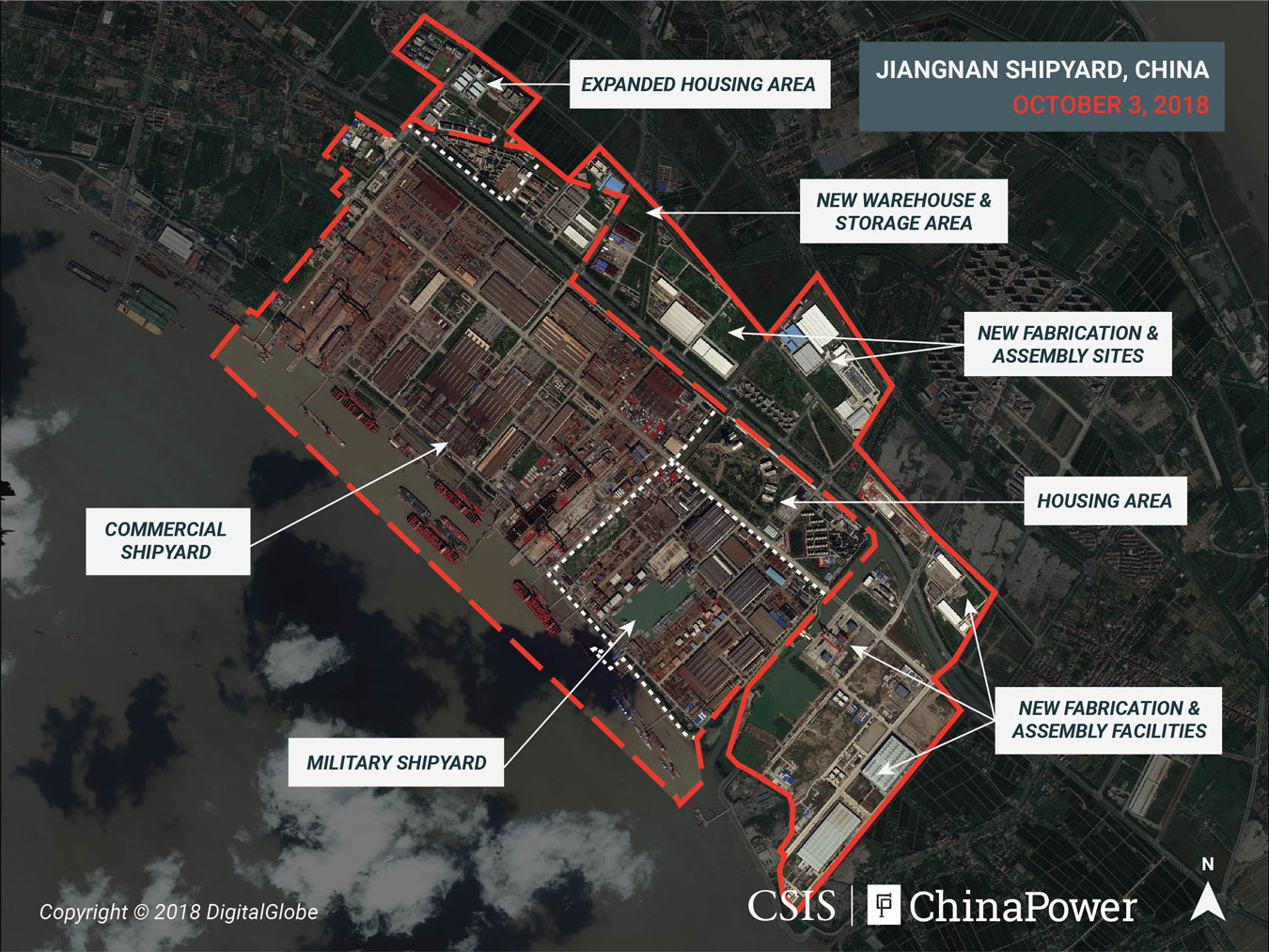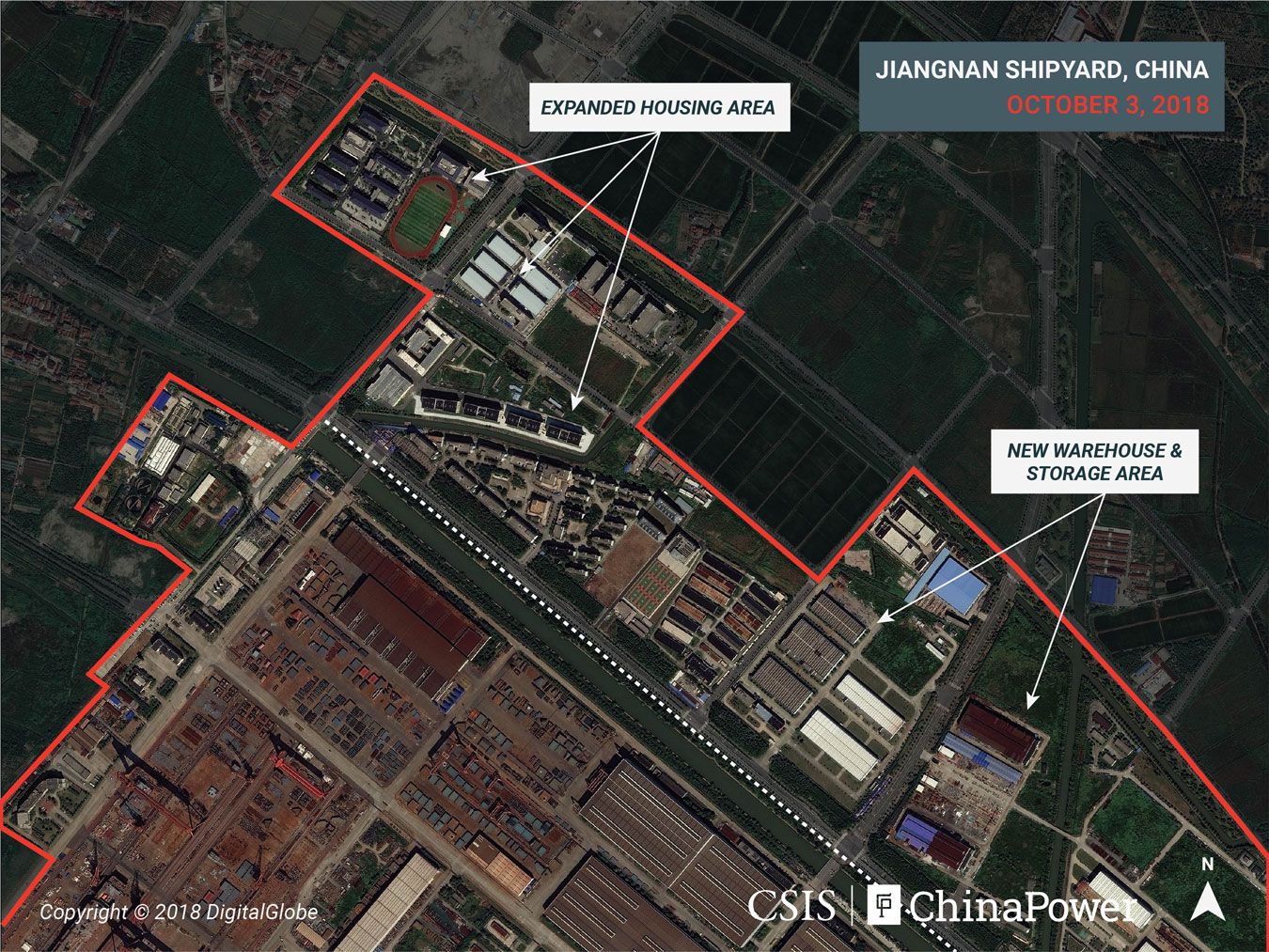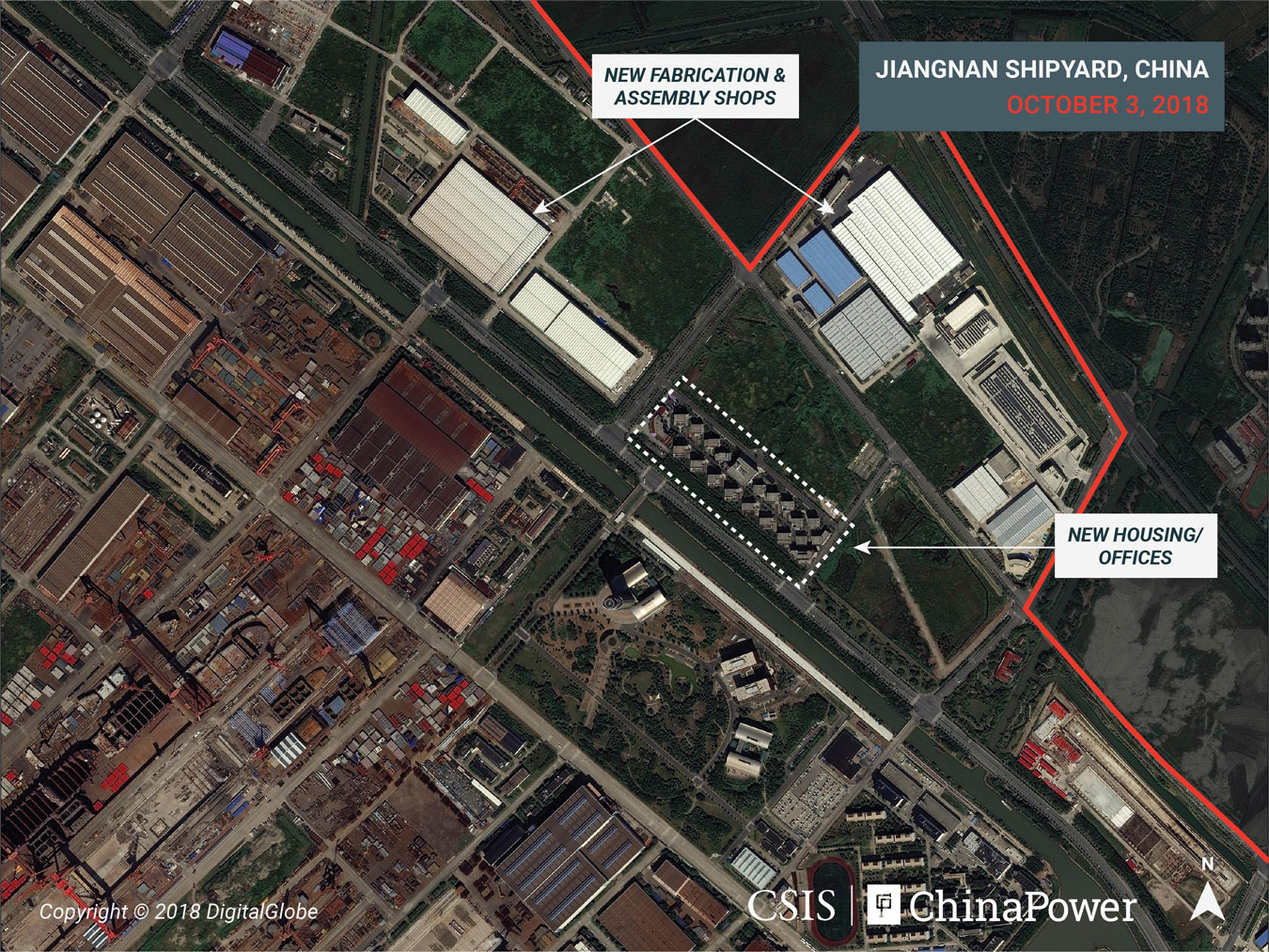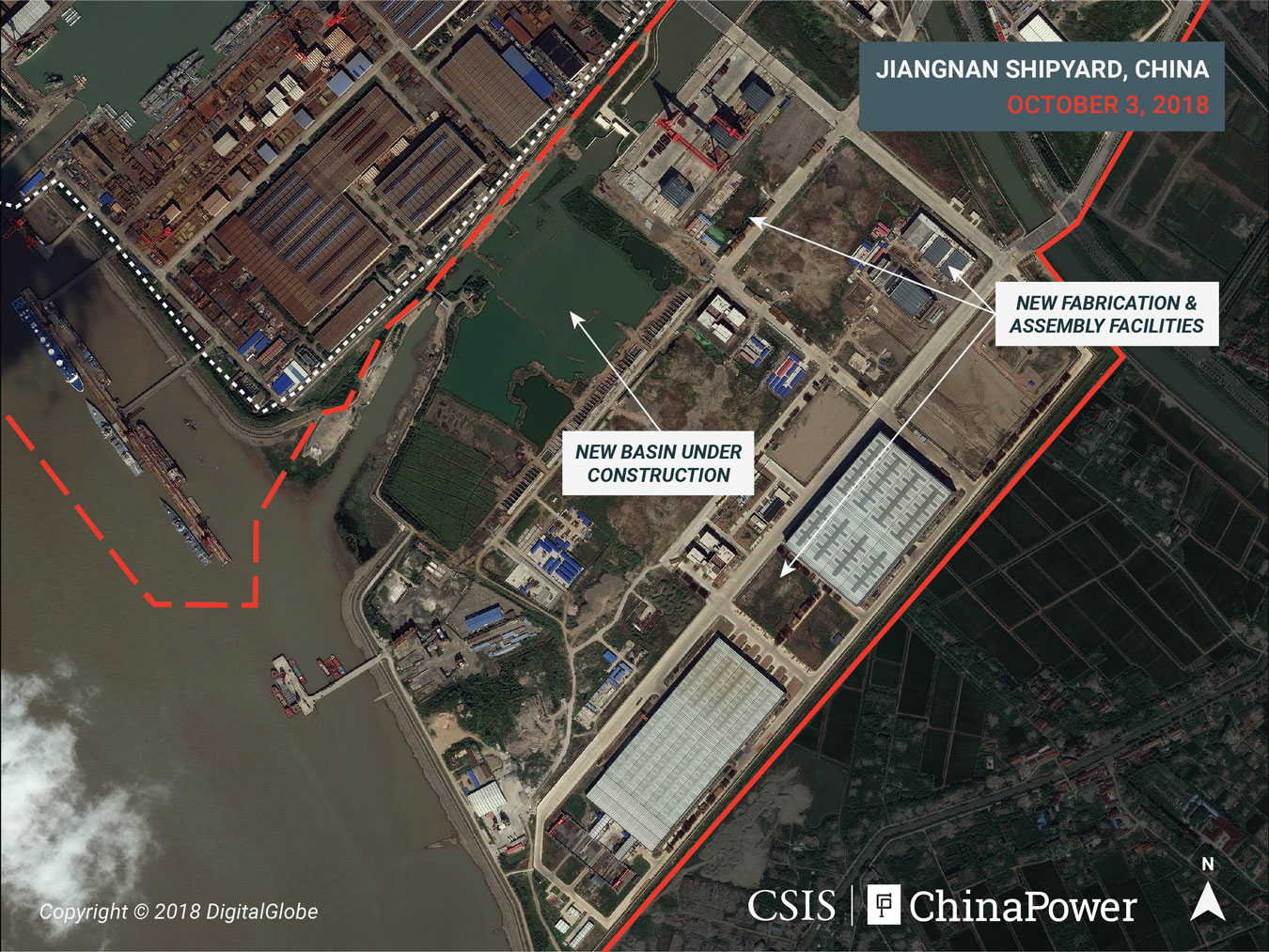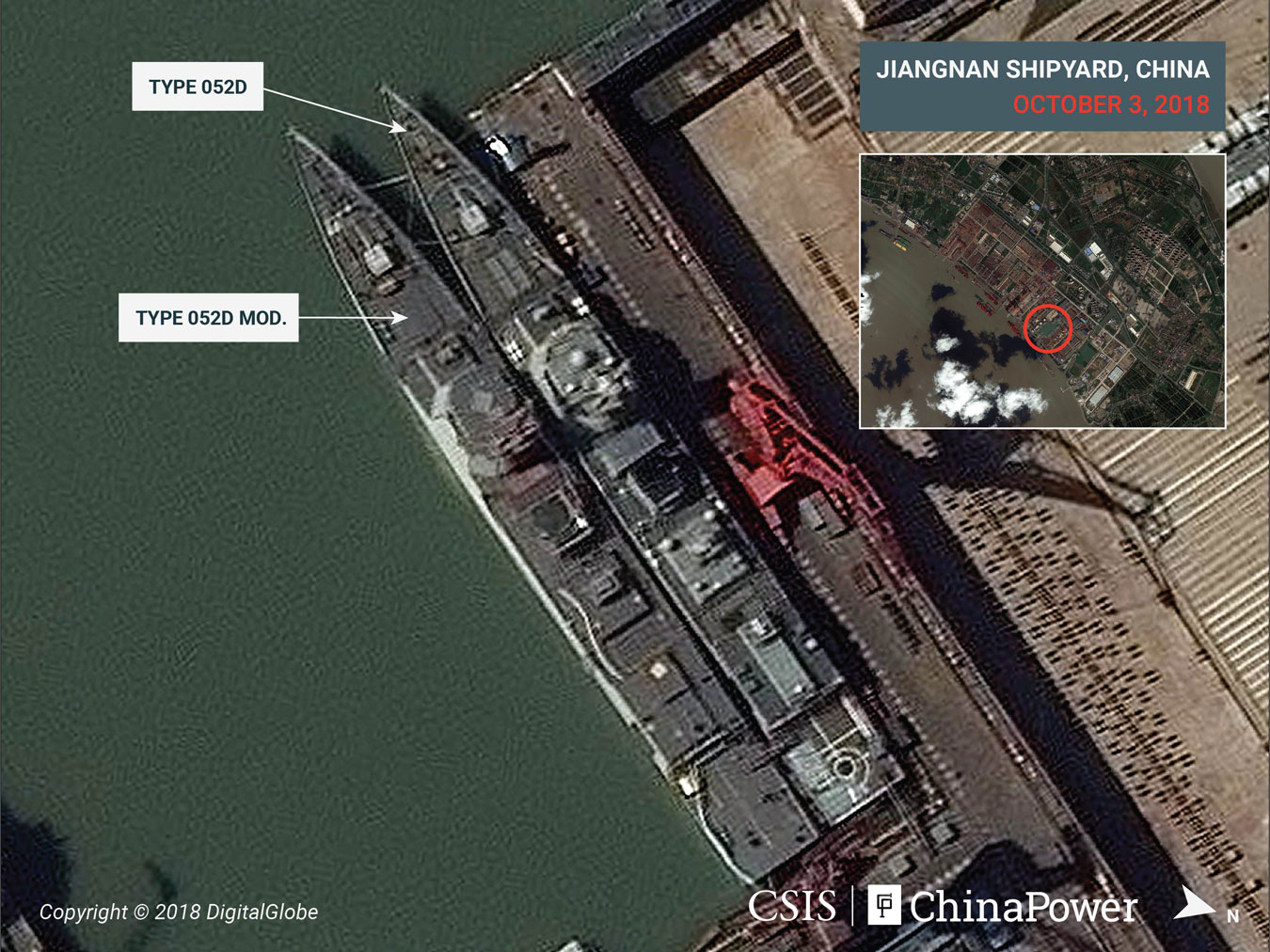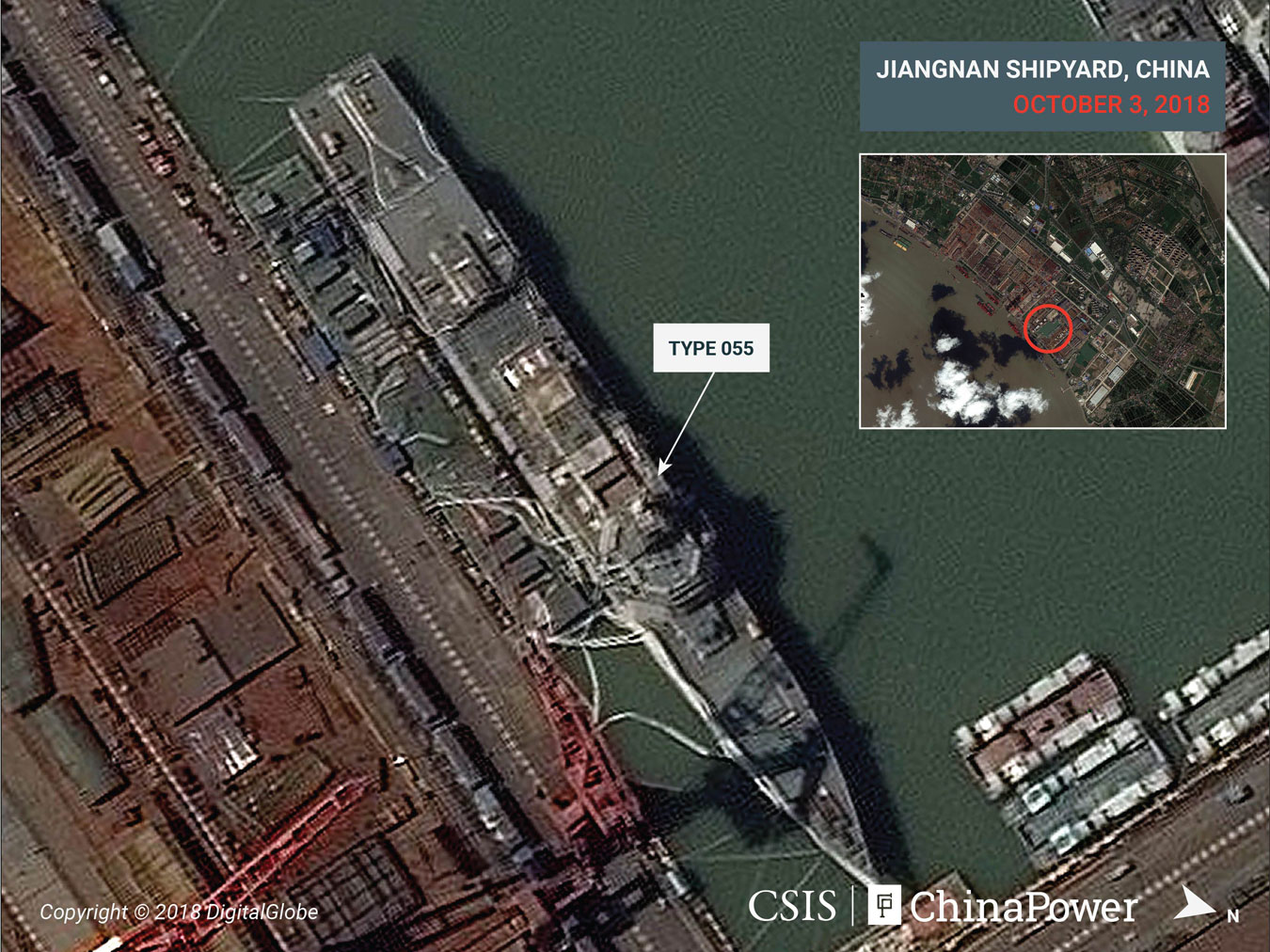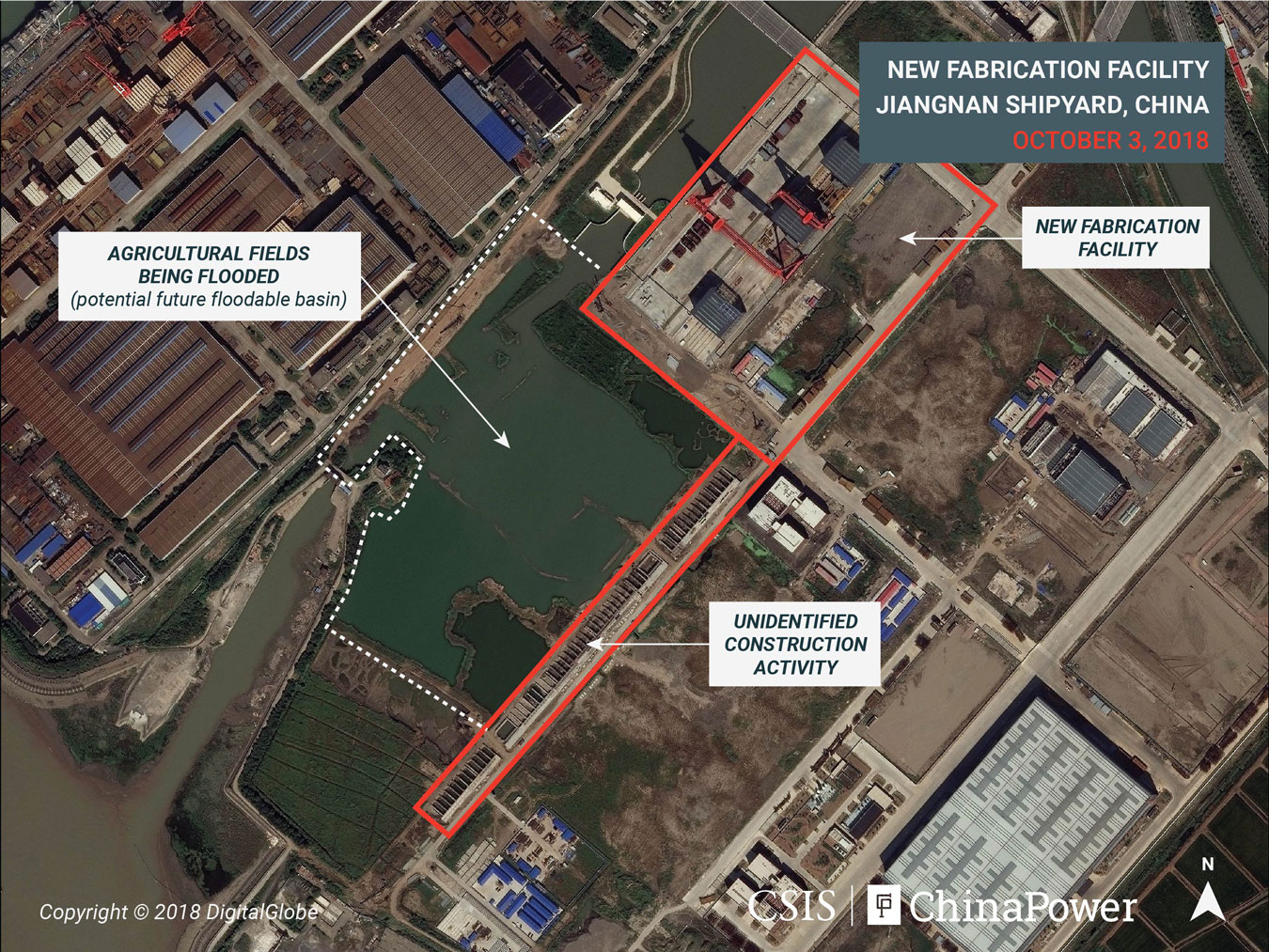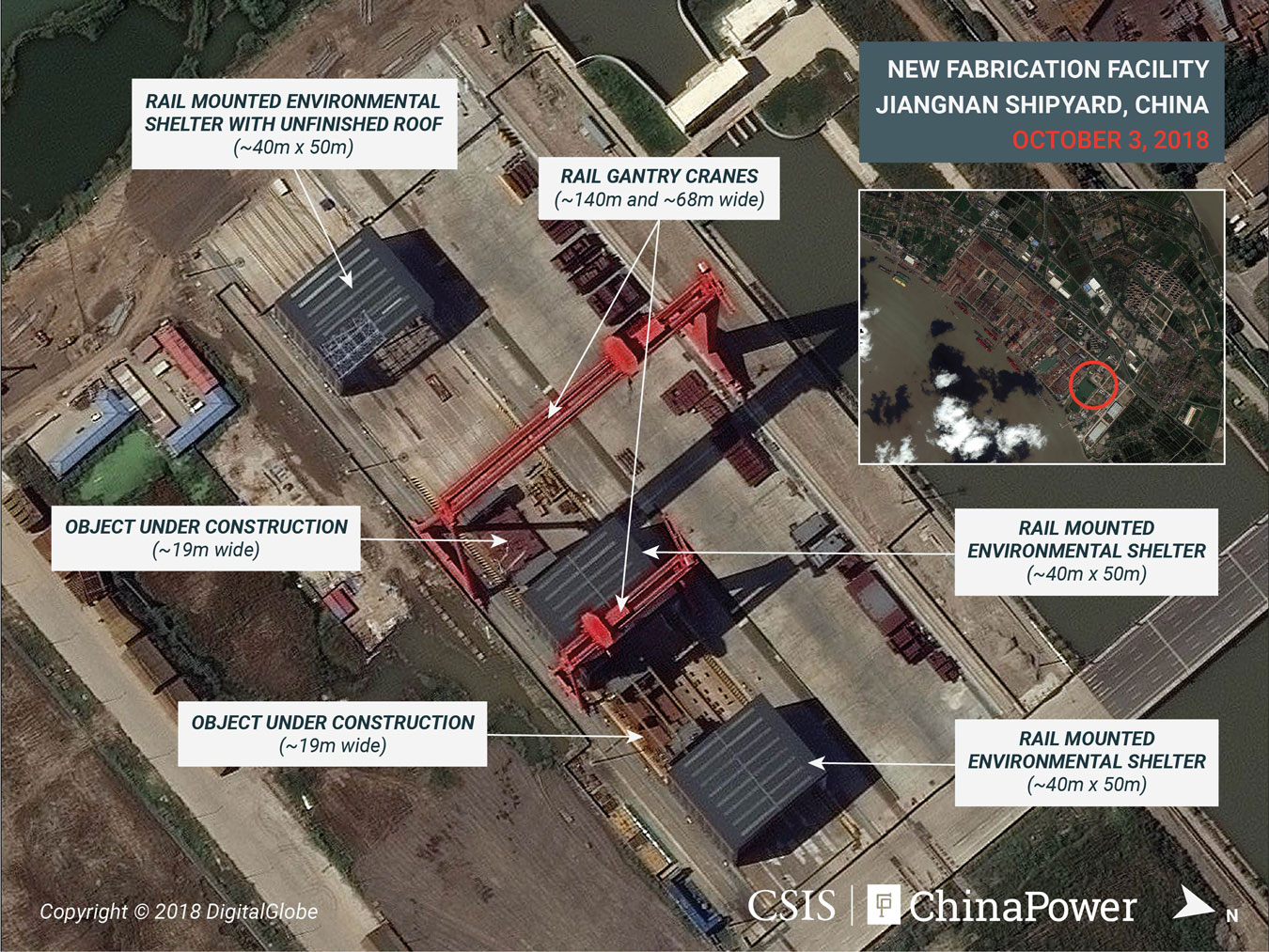Overview
Jiangnan Shipyard is one of China’s larger and more important commercial and naval shipbuilding facilities. It is located northeast of Shanghai on Changxing island (Changxingdao) at the mouth of the Yangtze River (31.369561°, 121.723209°). The shipyard was built between 2005 and 2007 to replace the existing shipbuilding facilities that were formerly located in central Shanghai. Operations at the new site commenced in 2008-2009.

Since the relocation, Jiangnan has continuously engaged in the construction, maintenance, and modification of a wide range of commercial and People’s Liberation Army Navy (PLAN) vessels. Analysis conducted by CSIS of satellite imagery from 2011 and 2018 illustrates the degree to which the shipyard’s infrastructure has developed during the intervening seven years.
Within the main shipyard, its commercial section has remained relatively unchanged. What changes did occur are typical of active shipyards of this size and type. In the military section of the shipyard, two additional block production areas were completed. Additional movable environmental shelters were also erected on the construction ways. The housing areas on the northwest corner of the shipyard were also completed.
The most notable expansion of Jiangnan has occurred in the area adjacent to the original shipyard where a large variety of industrial and support facilities have been constructed. Moving from northwest to southeast, these include: a new warehouse and storage area, two fabrication and assembly facilities, a housing area, and two large fabrication/assembly facilities. Since mid-2017, construction of another large fabrication/assembly facility and excavation of an adjacent wet basin has been underway. Given the proximity, layout, and construction timelines of all these facilities, it is evident that they either directly support the shipyard or are integral components of it. Including these new facilities, the original shipyard has expanded from approximately 7 km2 in 2011 to approximately 11.5 km2 – an increase of 64 percent.
Facility Description
To further assess the significance of Jiangnan, CSIS has analyzed ten different satellite images taken of the shipyard between April 10, 2018 through October 27, 2018. Although there is likely no hard-and-fast internal distinction, the main shipyard can be divided into three broad areas: commercial construction, modification and repair; military construction, modification and repair; and VIP housing.
Commercial Facilities
Among its many components, the commercial shipyard consists of eleven T-shaped piers, four dry docks (which also serve as construction ways), numerous block construction areas and fabrication/assembly shops, storage areas, as well as administration, engineering, and various support buildings. Throughout 2018, the commercial shipyard produced, modified, or repaired numerous commercial vessels – including very large crude carriers (VLCC), large liquified natural gas (LNG) carriers, very large ore carriers, and a collection of smaller commercial vessels.

Some of this infrastructure (notably Dry Dock #4) also supports PLAN construction. Dry Dock #3 was also observed to support PLAN vessels and Pier #11 was frequently used by newly commissioned PLAN vessels and vessels undergoing modification and repair.
Military Facilities
The military shipyard is an approximately 1.4 km2 subset of the larger commercial shipyard. It is notable for its large floodable ship basin (~118,600 m2) and lock, tandem construction way with block assembly areas, sideway launching way (~210 x 28 m), floodable launching way (~220 x 115 m), and dry dock (~25 x 35 m). These facilities also appear to include a dedicated construction hall, block construction areas, fabrication/assembly shops, storage areas, as well as administration, engineering, and support buildings.
Unlike the commercial shipyard, which constructs major vessel components in the open, the military shipyard has a construction hall where large subassemblies are built indoors. These large subassemblies are then moved by rail across the road to the sideway launching way or block construction area to be assembled into larger vessels under environmental shelters. Smaller classes of vessels, such as LCACs (air-cushioned landing craft) can be fully built within the construction hall before being moved to the sideway launching way for fitting out and launching.
Observed Naval Activity in 2018
Throughout 2018, there was significant construction, modification, and repair activity at Jiangnan. Much of this activity centered on building and fitting out the Type 052D, Type 052D modified variant, and Type 055.1 In April, two Type 052D destroyers were observed and by October this number had increased to five. Of these vessels, two were modified with a longer flight deck on the stern. Over the same period, two Type 055 cruisers were present in most images, although three were observed in April. The first Type 055 cruiser was launched in June 2017 and three additional cruisers were launched in 2018. The cruisers were built at Jiangnan and Dalian shipyards.
Several other vessels were also observed at the military shipyard in 2018:
- A Yuan Wang-class space event support ship was present from April through early October. Satellite imagery analysis suggests that it was having its radar systems repaired or replaced. Vessels belonging to the Yuan Wang-class are used for tracking and support of satellite and intercontinental ballistic missiles.
- The Xue Long icebreaker, with a distinctive large radome on its aft superstructure, appeared in mid-June when it entered the military shipyard’s dry dock. It then left and reappeared in late-October when it entered Dry Dock #4. Its presence in dry dock on both occasions suggests ongoing work to its hull or powerplant.
- Another icebreaker, the Xue Long 2, was under construction in Dry Dock #4 throughout 2018 until September, when it was moved to the floodable basin for launching. As of October, it has remained in the floodable basin as fitting out operations continued.
- An unidentified, but probable, Type 272 icebreaker was first observed in April 2018 in the floodable basin at the military shipyard. In June, it was berthed along Pier #11 and the following month it was observed in Dry Dock #4. It remained at Dry Dock #4 until late-October when it was moved back into the floodable basin. This pattern of movement, while not conclusive, suggests completion of construction and fitting out operations.
- Seven to ten Type 726A LCACs were present throughout the year. Their positioning and paint schemes indicate that they are being built and undergoing final fitting out prior to delivery. Two unidentified small ~30 x 7 m PC (probable patrol craft) were present during August-September.
- A small number of barges, tugboats, and miscellaneous small craft were present throughout the year.
Reports of the Type 002 – China’s Third Aircraft Carrier
The construction of a third aircraft carrier – the Type 002 – is rumored to be underway at Jiangnan. Details regarding the vessel are limited, and it was not until November 27, 2018 that the existence of the Type 002 was officially confirmed by China’s official news agency, Xinhua. Various unofficial reports speculate that the Type 002 is either being built within the existing commercial shipyard or at the new assembly facility currently under construction to the southeast of the military shipyard.
Satellite imagery from October 2018 provided no insight into whether these reports were correct. This imagery did show that the new fabrications/assembly facility was still under construction and that the adjacent potential wet basin was not yet suitable for launching vessels, as it had not been dredged and lacked a connection to the Yangtze River. Imagery from October 2018 also showed some unidentified construction along the south bank of the probable wet basin.
UPDATE: The construction of the Type 002 now appears to be underway at Jiangnan Shipyard. Satellite imagery collected in April 2019 shows significant new activity since late 2018. Learn more.



